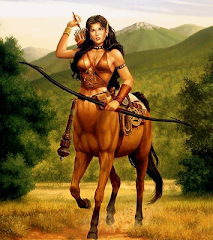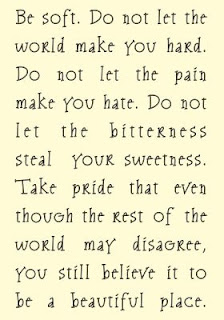Raul Castro to step down as Cuba president in April 2018
Details: https://t.co/zqPy83RBBj pic.twitter.com/Qk1w5lsQs5— JamaicaObserver (@JamaicaObserver) December 21, 2017
Jamaica Observer
written by AFP staff
Thursday December 21, 2017
HAVANA, Cuba — Cuban President Raul Castro will step down in April 2018 straight after his successor is chosen by a top governing council, according to a vote Thursday in the island state's National Assembly.
The vote by lawmakers pushed back the date of general elections, which were initially to be held at the end of February. The delay was necessary due to disruption caused by Hurricane Irma, which ravaged much of Cuba in September.
It means that Castro, 86, will stay on a couple of months later than planned.
The modification to Cuba's election calendar means general elections choosing the National Assembly's 600 members will be moved to a date yet to be decided.
Cuba's president is not directly elected by the people, but by the Council of State which is chosen by the National Assembly.
The lawmakers' election of the Council of State posts — including that of its president, who will also be the president of Cuba, replacing Raul Castro — was set for April 19.
The National Assembly session deciding these changes was closed to international media.
[source: Encyclopedia Britannica]
Constitutional framework
Cuba is a unitary socialist republic. The government is totalitarian, exercising direct control or influence over most facets of Cuban life. From 1959 to 2008, Fidel Castro was the chief of state and head of government. He also served as first secretary of the Communist Party of Cuba and commander in chief of the armed forces. In February 2008 he formally relinquished power to his brother, Raúl Castro. The country is governed under the constitution of 1976, which superseded revolutionary legislation that was enacted after the constitution of 1940 had been suspended. The 1976 constitution was slightly amended in 1992 and 2002.
Under the constitution, legislative authority rests with the National Assembly of People’s Power, whose more than 600 members serve five-year terms. The number of seats in the assembly has grown steadily, corresponding to the population of the provinces and municipalities. The National Assembly in its brief, twice-yearly sessions appoints a 31-member Council of State, which is headed by the president. The Council of State remains in session throughout the year and issues laws in the form of decrees (orders). The president also appoints and presides over a Council of Ministers (cabinet), which carries on the daily administration of the country.
Trade
Sugar historically has been the country’s main export. In the early 21st century, Cuba also benefited from a joint venture with Venezuela, which shipped petroleum to Cuba for refining and reexport. In the process, refined fuels vied with sugar to be Cuba’s top export. Nickel and other minerals, pharmaceutical products, tobacco (notably cigars), and beverages along with food and food products (including fish and citrus fruits) are also important exports. Among the most important imports are mineral fuels and lubricants, foods, machinery and transport equipment, and chemicals. Cuba’s main trading partners include Venezuela, China, Canada, the Netherlands, Spain, Brazil, Belgium, Mexico, and the United States.
In the 1950s more than two-thirds of Cuban foreign trade was with the United States. By 1961 Cuban-U.S. trade was down to 4 percent, and it soon ceased entirely under U.S. government embargo policies. Trade shifted to the Soviet Union and other socialist countries, and in 1972 Cuba became a full member of the Eastern-bloc Comecon (Council for Mutual Economic Assistance; disbanded in 1991). By the end of the 1980s, almost three-fourths of Cuba’s trade was with the Soviet Union, on extremely beneficial terms for Cuba. Cuba’s overall trade declined sharply after the Soviet Union dissolved in 1991. The United States again became a top trading partner beginning in 2002 when it began to sell food to Cuba under an amendment to the embargo legislation. At the beginning of the 21st century, the Cuban economy became increasingly integrated with that of Venezuela, whose president, Hugo Chávez, used his country’s substantial petroleum-derived wealth to advance a regional socioeconomic agenda through the Bolivarian Alliance for the Peoples of Our America (ALBA) that was intended to offer an alternative to the free market and neoliberalism.
Labour and taxation
The rate of unemployment in Cuba is lower than in many Latin American countries. However, numerous jobs were lost in the 1990s as the economy was hit by the breakup of the Soviet Union. Underemployment is a persistent concern among industrial workers. The State Committee for Work and Social Security sets all wages for the government, which is the dominant employer. Moreover, many jobs must be arranged through state agencies. The standard workweek is 44 hours.
The constitution places the needs of the “economy and society” over the demands of individual workers. However, the document also guarantees an eight-hour workday and one month of paid vacation per year. Strikes are illegal, and independent labour unions are discouraged; no known strike has ever been staged under communist rule. The only legally recognized labour organization is the Confederation of Cuban Workers, which is designed to support the government, raise the political consciousness of workers, and improve managerial performance and labour discipline.
Few Cuban workers pay income taxes, although self-employed workers are heavily taxed. Many Cubans make in-kind contributions to the government by participating in mass organizations, volunteering for agricultural work, or meeting production quotas through overtime. Most teenagers are expected to spend several weeks each summer doing agricultural work. The social security program is financed by an enterprise tax.
Now keep in mind this is the person the Democratic party in the United States of America, including recent US presidential candidates Hillary Clinton, Bernie Sanders, and Jill Stein have openly declared tremendous respect for this monster and his comrade Argentine Marxist revolutionary Che Rivera who massacred thousands. (emphasis mine)




















































No comments:
Post a Comment